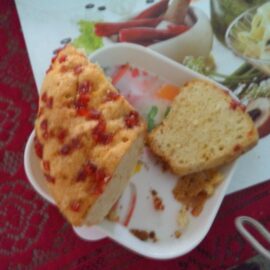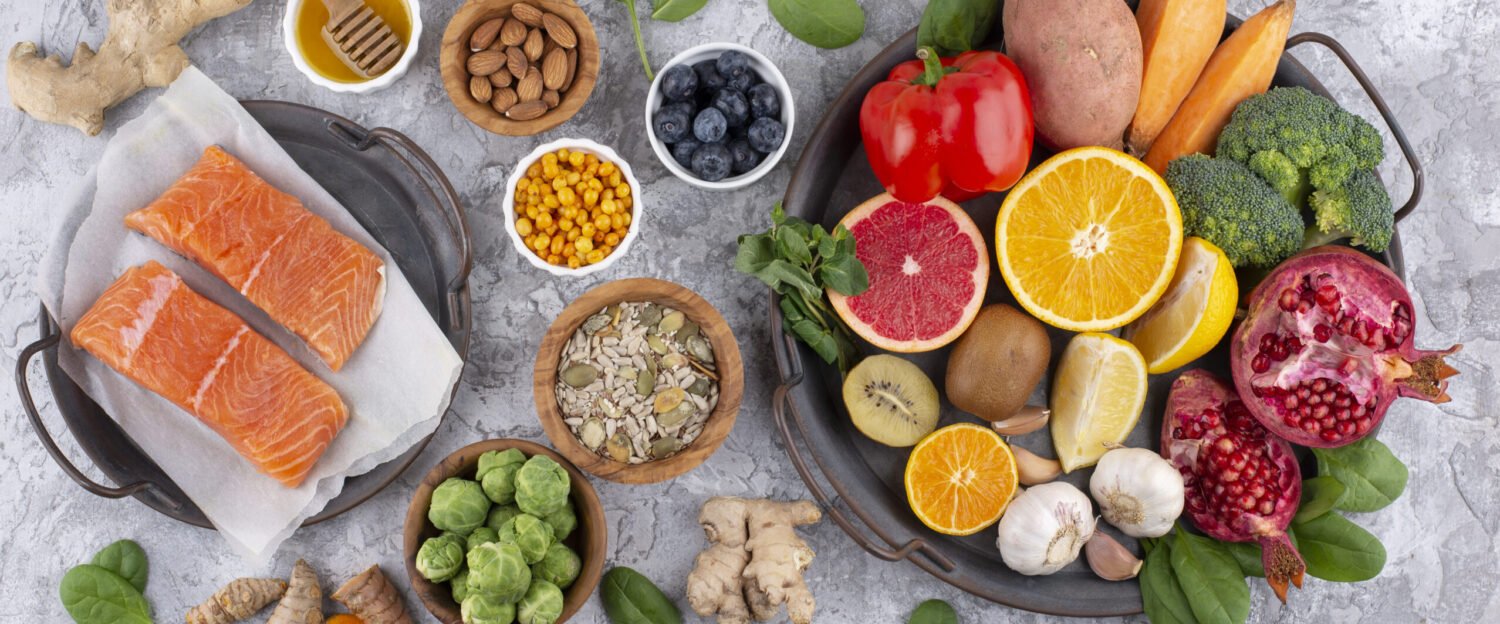
Table of Contents
About Sponge Cake:
Sponge cake is a type of light and airy cake known for its delicate texture and versatility in various desserts. It is a staple in baking, widely used as a base for layer cakes, trifles, and other desserts. Sponge cakes have been enjoyed for centuries and continue to be a popular choice in baking due to their light, airy texture and adaptability in various desserts. They are a staple in both home baking and professional pastry kitchens around the world.
Sponge cakes have been enjoyed for centuries and continue to be a popular choice in baking due to their light, airy texture and adaptability in various desserts. They are a staple in both home baking and professional pastry kitchens around the world.
The history of cakes can be traced back to ancient times. The concept of combining ingredients to create a sweet, baked product has roots in multiple ancient civilizations. Here are some key points about the origins of cakes:
- Ancient Egypt (circa 3000 BCE), Ancient Greece, Ancient Rome (circa 5th Century BCE),Medieval Europe (circa 5th Century – 15th Century), They incorporated ingredients like eggs, butter, and leavening agents (such as yeast) to create more structured and airy cakes. These early cakes were often flavored with nuts, fruits, and spices..
- Renaissance and 17th Century: The Renaissance period saw the introduction of new ingredients like refined sugar, which began to replace honey as a primary sweetener. This led to more delicate and refined cake recipes.
- 18th Century: The 18th century brought significant advancements in cake-making techniques. Baking powder and soda were introduced, revolutionizing the leavening process. This era saw the emergence of classic cake types like pound cake and sponge cake.
- 19th Century: The 19th century saw the development of baking as an industry, like the Victoria sponge cake.
- 20th Century: The 20th century brought about further innovations in cake making with the advent of electric mixers, standardized measuring tools, and a wider variety of available ingredients. This led to the creation of numerous cake recipes and styles, including the famous chiffon cake and the modern layer cake.
Today, cakes are a staple in celebrations around the world and come in countless varieties, flavors, and forms, reflecting a rich history of culinary innovation and tradition. We can bake Cake in various flavors and on different mode such as Stove as well as oven.
Key Points To Prepare Classic Sponge Cake:
- Ingredients: The basic ingredients for a sponge cake typically include eggs, sugar, flour, and a leavening agent like baking powder , Baking Soda. Some recipes also add a flavoring agent like vanilla extract.
- Aeration: The unique feature of a sponge cake is its method of aeration. It relies on the incorporation of air into the batter during the mixing process. This aeration creates a light, fluffy texture.
- No Fat: Unlike many other cake recipes, sponge cakes do not contain butter or oil. The leavening and texture primarily come from the whipped eggs.
- Varieties: There are different types of sponge cakes, including Genoise – which is made by beating whole eggs with sugar over gentle heat, Victoria sponge – which uses equal parts of butter, sugar, eggs, and flour, and more.
- Versatility: Sponge cakes are incredibly versatile and can be adapted for a wide range of desserts. They can be layered with cream, fruits, or frosting, or used as a base for trifles and other desserts.
- Absence of Chemical Leavening: While some sponge cake recipes do include baking powder, many traditional recipes rely solely on the air incorporated during the mixing process for leavening.
- Careful Mixing: Care is taken when folding in dry ingredients to maintain the aeration achieved during the egg and sugar beating. Overmixing can cause the cake to lose its lightness.
- Even Texture: When baked correctly, a sponge cake should have a uniform, fine crumb structure.
Process of cooking Sponge Cake:
- Preheat the microoven at 180°c for 15min
- First of all blend the eggs well till the bubbles appear.
- I used ghee but u can also use butter or sunflower/olive oil. Heat the ghee and blend with eggs.
- If ur using sugar grind it into powder and blend with egg mixture.
- Add baking powder & cardamom to maida and mix well
- Add maida to egg mixture and mix them till no bubbles are there.f the mixture consistency is thick then add some milk and blend well.
- Remember the paste shouldnt be too thick or thin
- After the paste is ready, add vanilla essence and nuts
- Take cake mould and grease the mould with ghee and little maida over it and pour entire mixture in it.
On Microwave:
- Place the mould in microoven and bake at 180°c for 30 – 40min
On Stove: Cooker
- Heat the cooker or Heavy thick kadai, pour 1inch depth salt or sand into vessel
- Heat for 5min and place the cake mould . close it with lid. Bake for 30min.
- Remove the whistle and gasket for cooker before closing lid.
- Check the cake is done or not with tooth stick. If stick comes out clear then its done if not, bake it for few more min.
- Cool it for 5min and serve the yummy cakes
Related Posts:
- RAVA CAKE
- Pan Cake
- Marble cake
- Chocolate Cake
Classic Sponge cake Recipe Card:

Classic Sponge Cake-Home made (Cooker and Oven)
Equipment
- Pressure Cooker/Thick Big Kadai
- MIcrowave
Ingredients
- 1/4 cup Ghee/Butter
- 4 large eggs
- 1 cup powdered sugar
- 1 cup Maida/Wheat Flour
- 1 teaspoons baking powder
- 1/4 teaspoon Baking Soda
- 1 teaspoons pure vanilla extract
- 1/4 cup Milk optional
- 2tsps Tutti Frutti/Dry Fruit nuts
Instructions
- Preheat your oven to 350°F (175°C). Grease and line two 9-inch round cake pans with parchment paper.
- In a large mixing bowl, crack the eggs and add the granulated sugar. Using a stand mixer or electric hand mixer, beat the eggs and sugar on high speed for a solid 7-8 minutes. You’re looking for a mixture that’s creamy, pale, and has a ribbon-like consistency.
- Sift the cake flour, baking powder, and salt into the egg mixture. Gently fold the dry ingredients into the batter using a spatula. Maintain the lightness and fluffiness of the batter.
- Stir in the vanilla extract, ensuring it’s evenly distributed throughout the batter.
- Divide the batter evenly between the prepared cake pans and smooth the tops.
- Bake in the preheated oven for 25-30 minutes, or until the cakes are golden and a toothpick inserted into the center comes out clean.
- Allow the cakes to cool in the pans for about 10 minutes. Run a knife around the edges to release them, then transfer them to a wire rack to cool completely.
Notes
- I generally use whole wheat flour for children purpose.
- Optional: Frost the cooled cakes with your favorite frosting, or dust with powdered sugar for a simple, elegant finish.
- Indulge in the heavenly delight of your Fluffy Vanilla Dream Cake!
Nutrition:
The nutritional content of a sponge cake can vary depending on the specific recipe and portion size. Here is a general overview of the approximate nutritional values for a typical slice (around 1/12th of an 8-inch cake) of a plain sponge cake made with common ingredients:
- Calories: Approximately 180-200 kcal
- Carbohydrates: Around 30-35 grams
- Protein: 3-4 grams
- Fat: 6-8 grams
- Sugar: 15-20 grams
- Fiber: 0.5-1 gram
It’s important to note that these values are estimates and can vary based on factors such as the specific recipe, ingredient brands, and preparation method. If you’re looking for a more precise nutritional breakdown, it’s recommended to use a specific recipe and a nutrition calculator that takes into account the exact ingredients and quantities used.
Keep in mind that these figures are for a plain sponge cake without any additional toppings, fillings, or frostings. If you add things like buttercream, chocolate ganache, fruit fillings, or whipped cream, the nutritional content will change accordingly. Additionally, if you’re concerned about specific dietary needs or restrictions, you may want to consider using alternative ingredients or seeking out specialized recipes tailored to those requirements.
